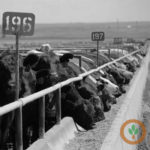
A livestock economist says the industry continues to place cattle into feedlots earlier than normal.
University of Missouri’s Scott Brown says placements were 9% above year-ago levels and while that is within pre-report estimates, it was at the very high end of the range. “This continues to show us that there aren’t many options to keep those calves in some of the dry weather regions of the country,” he says.
He tells Brownfield more than 60% of the cattle placed were under 800 pounds. “We get 4, 5, 6 months down the road and we’re going to have a little more slaughter than many of us would have thought pre-report,” he says. “We’re putting those lighter calves into the feedyard just not having any other good options.”
Brown says the numbers are largely neutral to nearby prices, but could put significant pressure on deferred futures contracts.
There were 12.2 million head on feed as of March 1, up 1% on the year, and it’s the highest inventory for March 1 since the series began in 1996.
